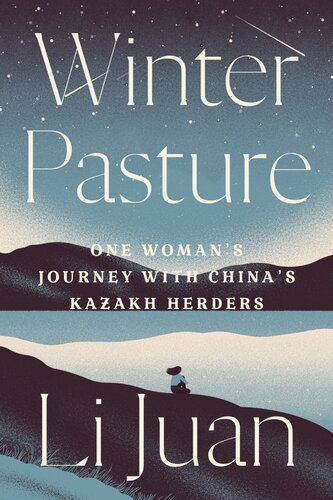
Winter Pasture
One Woman's Journey with China's Kazakh Herders
کتاب های مرتبط
- اطلاعات
- نقد و بررسی
- دیدگاه کاربران
نقد و بررسی

Starred review from January 1, 2021
Multi-award-winning author Juan (My Altay) and her mother have a store in northwestern China that caters to Kazakh nomads. She always hoped to join a family and chronicle their lives. In 2010, she got her wish and accompanied Cumo and his family for a season in the winter pasture. Cumo is 50 years old, powerfully built, skilled but also argumentative, and drinks heavily. His wife is supportive. Zhada, their only son, is "their center of gravity." They own 500 sheep, 30 camels, and 100 cattle and horses. Juan describes the backbreaking work of building a burrow (house). Herdsmen cover large distances with their herds, and cold is always present. Everyday someone must walk a long distance for snow for household water. Nineteen-year-old Kama sacrifices her freedom to work and relieve Cumo when he's ill or needs to travel. From this experience Juan observes, "herder children mature slowly but age quickly." Conversation is lively with meat-centered meals and endless cups of tea. People are surprised by Juan's presence (a Han Chinese among Kazakh Muslims) and stare shamelessly at her, yet she returns their stares! VERDICT Readers who enjoy descriptive writing about challenging lives will love this work.--Susan G. Baird, formerly with Oak Lawn P.L., IL
Copyright 2021 Library Journal, LLC Used with permission.

January 1, 2021
A warm portrait of stark, strenuous lives in remote China. From her home in northwestern China, essayist and nature writer Li joined a family of Kazakh herders--and their camels, sheep, cattle, and horses--to spend winter on immense pastureland where the population density was "one person per every square mile and a half." Winner of the People's Literature Award in China, this charming memoir, the author's first to be translated in the U.S., captures the harsh reality and quiet pleasures of the herders' nomadic way of life, migrations threatened by the consequences of overgrazing. Amid "towering waves of immaculate golden sand dunes," where temperatures plummet to minus 31 degrees, the family constructs a burrow made with sheep manure, the "sole building material available in the desert," incomparable because it "can magically, continuously radiate heat." With wall hangings, rugs, a hearth, and a tablecloth for meals, the burrow becomes a home. Although the author wondered what contribution she could make, she took on a variety of necessary tasks: "I cleaned the cattle burrow and sheep pen every day, hauled snow"--critical for providing water--"made nan, embroidered," and sometimes helped out with the exhausting job of herding. Li offers affectionate profiles of neighbors, visitors, and members of her host family: Cuma, the father, "intelligent and ambitious, capable and cocky," and too often drunk; his reticent wife, whose "aloofness was enough to give you goose bumps. But when she did smile, she was radiant. Light beams shot out from between her brows as if she invented this 'smiling' business"; and their 19-year-old daughter, who had to leave school and dreams of becoming educated and independent in order to help her family. The arduous work caused Cuma and his wife to rely on daily doses of painkillers, but their mastery of their environment, and their contentment, earned the author's admiration. A rare look at a disappearing world.
COPYRIGHT(2021) Kirkus Reviews, ALL RIGHTS RESERVED.

Starred review from January 25, 2021
Chinese journalist Juan makes her stateside debut with a magnificent tale about traveling through the freezing tundra of northern China. After publishing her second book, Juan decided “to embark on an adventure truly worthy of an author” by engaging in a way of life the Kazakhs have practiced for centuries. She joined the Cuma family, a couple in their 50s and their 19-year-old daughter, as they moved livestock to their winter home, a remote region that stretches across the border between China and Kazakhstan. Their trek lasted three days and was followed by a crushing winter with temperatures dipping to minus 31 degrees Fahrenheit. Along the way, Juan learned the value of hard work and the symbiotic relationship between man and nature. She highlights the importance of the herders’ chief survival tool, sheep manure, which is used to build animal pens and structures for human habitation in deep winter. She also recounts, in remarkable detail, learning the Kazakh technique of weaving textiles from the readily-available wool of the community’s hundreds-strong flock of sheep. A seamless blend of memoir, travelogue, and nature writing, Juan’s skillful prose paints an extraordinarily vivid picture of a remote world (“Nebulous nights etched with the moon’s halo, and those dawns dim and gloomy”). This mesmerizing memoir impresses on every page.

























دیدگاه کاربران